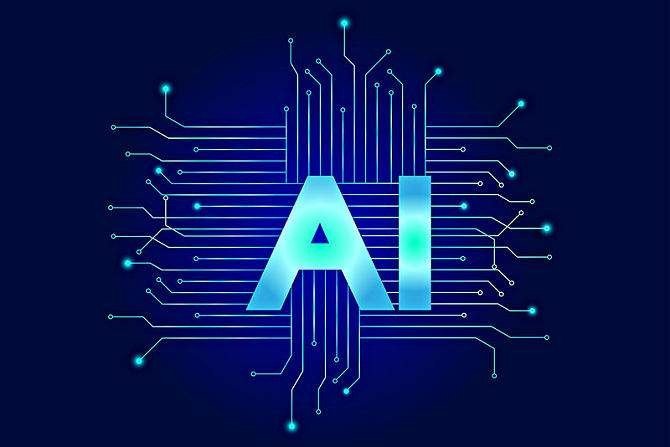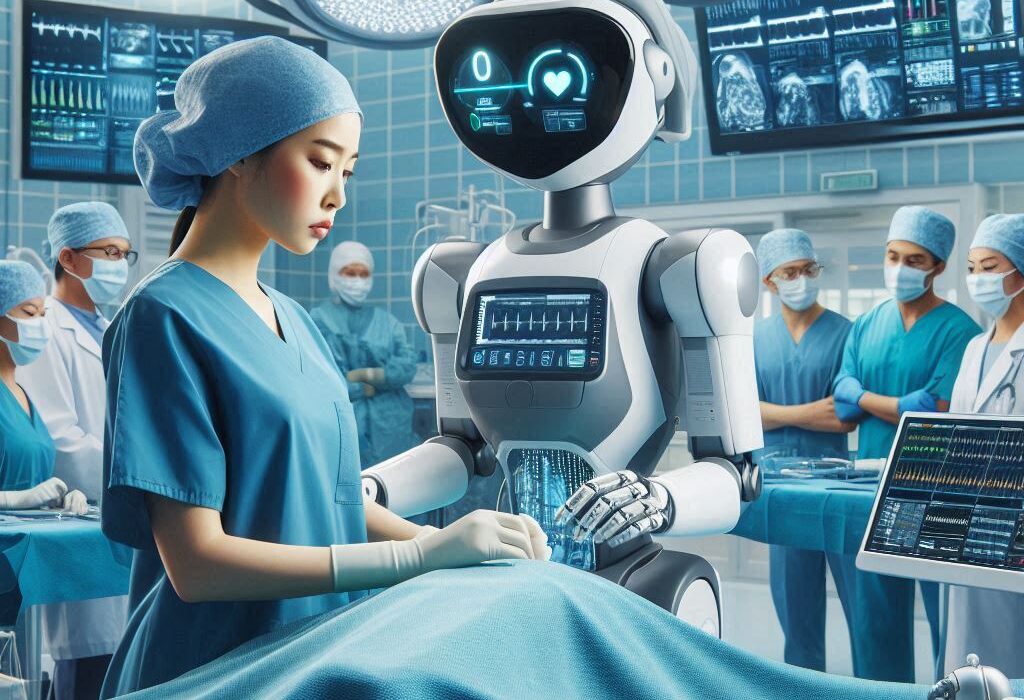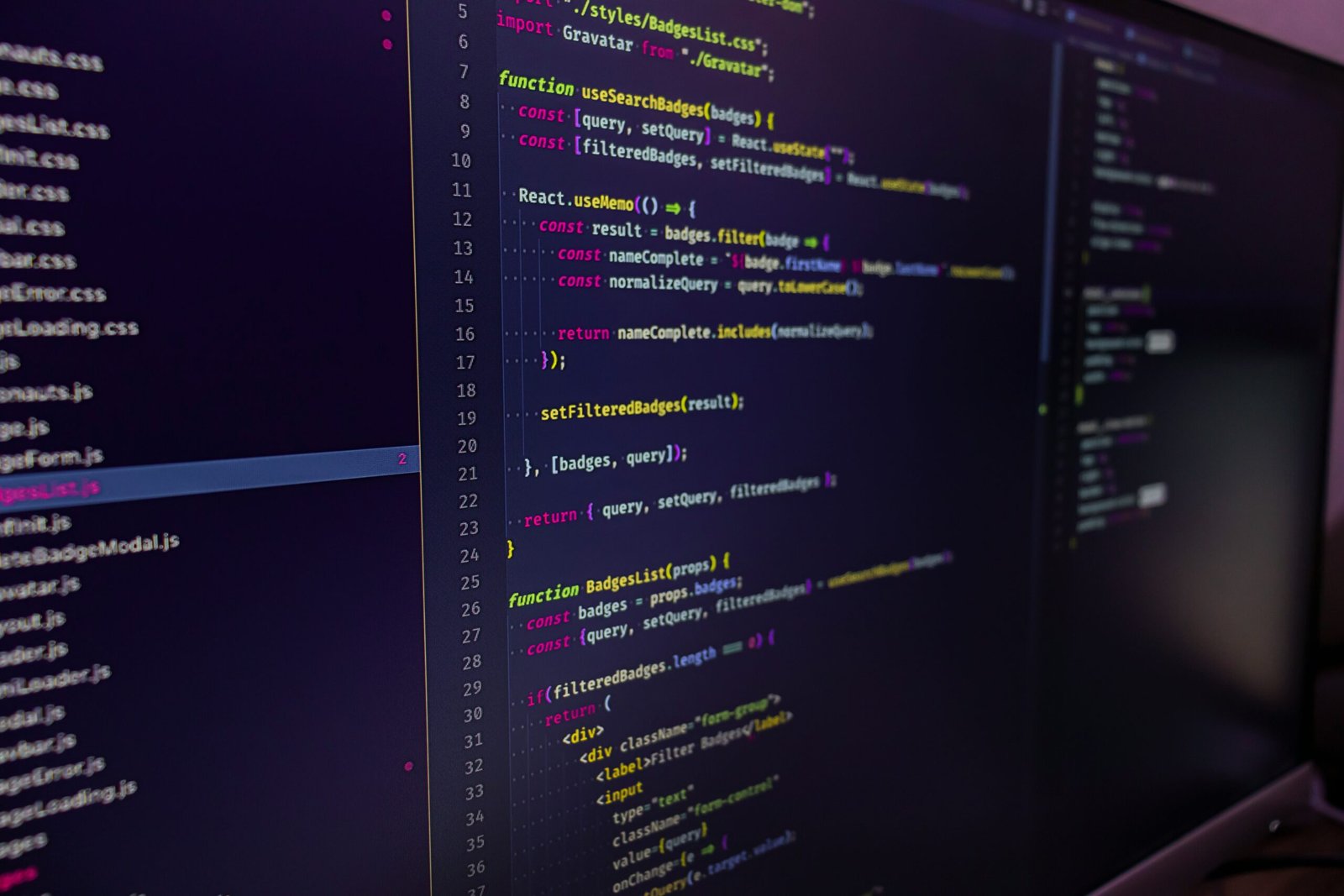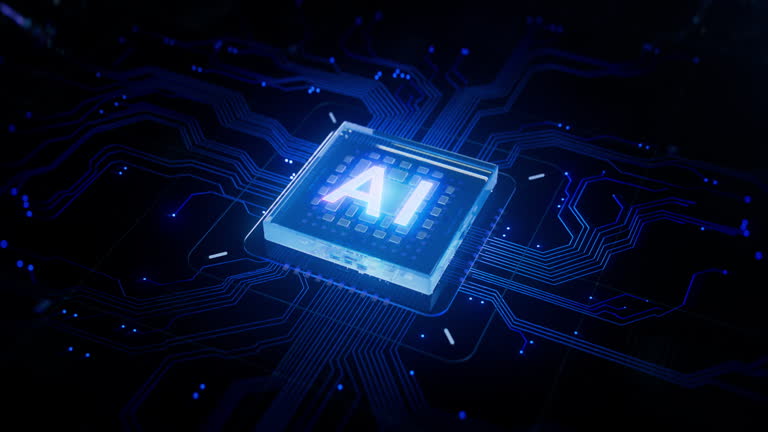In the hushed pre-dawn glow of a crowded international airport, a woman stands before a sleek, glassy kiosk. She removes her mask, straightens her hair, and stares at the lens. A brief scan, a gentle beep—and the gates swing open. No passports flipped through. No boarding passes dug from purses. Just her face, reduced to a code, silently unlocking the gates to the sky.
Around her, dozens of travelers step forward, faces caught in that same eerie luminescence. It’s almost magical. Almost. Because behind the speed and convenience hums a question growing louder every year:
Can we truly trust a machine that knows our face better than we know our own?
Biometric security is no longer a sci-fi fantasy or the secret arsenal of spies and governments. It’s on your phone, in your bank, at your workplace, and increasingly embedded in the very walls of your city. Your fingerprint opens your smartphone. Your face unlocks your home. Your voice verifies your bank account. And all of it happens in the blink of an algorithmic eye.
The world has ushered in the age of “who you are” instead of “what you know.” But as our faces, irises, and fingerprints become keys to our digital kingdom, so too grows the fear: What happens when those keys are stolen, manipulated, or used against us?
The story of biometric security is a story of science and secrecy, innovation and intrusion, wonder and wariness. It’s a story about how the very traits that make us unique have become the most coveted currency of the 21st century—and whether, in the end, we’ll come to regret giving so much of ourselves away.
A Longing for Perfect Identity
Long before cameras stared us down, humanity wrestled with the same primal question: Who are you? From royal seals pressed into wax, to medieval knights displaying coats of arms, identity has always been about proving one simple truth: I am who I say I am.
The industrial age brought signatures, paper documents, and eventually government-issued IDs. But these analog systems had their flaws. Papers could be forged. Names could be stolen. Even fingerprints, first used in criminal investigations in the late 1800s, carried controversy over their reliability.
Fast forward a century, and the digital revolution amplified the stakes. Computers demanded passwords, and suddenly our identities hinged on strings of characters we barely remembered. People used birthdays, pet names, or that timeless classic: “password123.”
Cybercrime exploded. Hackers harvested passwords like ripe fruit, infiltrating bank accounts, social media profiles, and government databases. In 2021 alone, an estimated $6 trillion was lost globally to cybercrime—a figure so vast it rivals the GDP of entire nations.
We longed for something better, something foolproof. A system that couldn’t be forgotten, misplaced, or guessed. A way to prove identity without carrying plastic cards or remembering complex passcodes.
Enter biometrics—the dream of perfect identity.
The Science of You
Your face is a masterpiece of geometry. The distance between your eyes, the curve of your cheekbones, the shape of your lips—all form a pattern as distinctive as your fingerprint. Even identical twins, virtually indistinguishable to the naked eye, have subtly different facial measurements detectable by machines.
Biometric security systems transform these measurements into mathematical representations called templates. It’s not an image of your face stored in a vault, but a string of data points—a digital mask that machines can compare for a match.
The same goes for fingerprints, retinas, irises, voice patterns, gait, even your ear shape. Some systems measure the rhythm of your typing or the unique way you walk. The possibilities feel endless.
One of the most advanced frontiers is iris recognition. The colored ring around your pupil contains hundreds of intricate textures that remain stable from childhood through old age. The odds of two people sharing the same iris pattern are estimated at 1 in 10⁷⁸—numbers so astronomical they dwarf the known atoms in the universe.
It’s thrilling technology. Precise. Fast. Almost infallible.
But technology never exists in a vacuum. The real world is messy, unpredictable, and haunted by human error, bias, and greed.
From Fiction to Everyday Life
In the summer of 2002, moviegoers packed theaters to watch Tom Cruise in Minority Report. In one dazzling scene, Cruise’s character strides through a futuristic shopping mall as retina scanners identify him, triggering personalized ads:
“John Anderton, you could use a Guinness right about now!”
It was thrilling. It was terrifying. And it felt decades away.
But less than twenty years later, reality caught up.
In China, cities hum with surveillance cameras boasting facial recognition that can track citizens across parks, train stations, and even school classrooms. In the United States, local police departments have quietly adopted facial recognition tools to identify suspects from blurry security footage. Tech giants like Apple and Samsung introduced Face ID and iris scanning, making biometrics a routine part of daily life.
By 2025, the global biometric market is projected to surpass $82 billion, a figure driven by smartphones, airports, banks, and a hunger for frictionless security. No more remembering dozens of passwords. No more fumbling with keys. Just look, speak, or touch—and you’re in.
The convenience is intoxicating. But so is the potential for abuse.
When Machines Get It Wrong
On a warm summer day in 2019, Robert Williams was relaxing at home in suburban Detroit when police cars pulled into his driveway. Officers cuffed him in front of his family. At the station, they showed him a grainy photo from a security camera. The system said it was him.
But it wasn’t.
Williams had never set foot in the store where the alleged theft occurred. The facial recognition algorithm had simply chosen the wrong Black man from its database.
He spent thirty hours in jail for a crime he didn’t commit.
Williams’ ordeal was not unique. Studies from MIT and the National Institute of Standards and Technology (NIST) have shown that many facial recognition systems exhibit higher error rates for people with darker skin tones, particularly women. In some algorithms, error rates for identifying Black women are up to 34%—a shocking figure when the same systems boast near-perfect accuracy for lighter-skinned men.
These disparities stem from biased training data. If a system is trained mostly on images of white faces, it struggles to correctly recognize diverse populations. Yet police departments and private companies continue to deploy these systems, sometimes with life-altering consequences.
In China, where the government uses facial recognition to monitor Uyghur Muslims, technology has become an instrument of oppression. Cameras scan mosques, track movements, and even alert authorities if too many Uyghurs gather in one place.
The same technology that unlocks your phone can lock down a society.
The Irrevocable Nature of Biometrics
A password can be changed. A credit card can be canceled. But you can’t swap out your face.
That’s the grim reality of biometric security: your body is your key, and once it’s stolen, there’s no going back.
In 2019, a hack of Biostar 2, a security platform used across Europe, exposed over 1 million fingerprints and facial recognition records. Unlike a compromised password, those fingerprints remain unchanged for life.
Researchers have already demonstrated how to trick facial recognition systems using photographs, 3D-printed masks, or deepfake videos. In one chilling experiment, hackers used high-resolution photos from social media to create masks capable of unlocking certain phone models.
Imagine your bank app, once secure behind your face, suddenly opening for an impostor holding a replica of your visage. The same technology that protects your identity can become the perfect weapon to steal it.
The Rise of Deepfakes
Adding another layer of anxiety is the explosive rise of deepfake technology. Using machine learning algorithms called Generative Adversarial Networks (GANs), deepfakes can create astonishingly realistic videos of people saying or doing things they never said or did.
A fabricated video might show a political leader declaring war, or an executive confessing to fraud, or your own face starring in explicit content you never filmed.
In 2019, a UK-based energy firm lost $243,000 to scammers who used an AI-generated voice to imitate the company’s CEO. The voice was so convincing that an employee transferred funds to a fraudulent account.
Deepfakes erode trust, not just in media, but in the very biometric signatures we rely on for security. If your voice, face, and mannerisms can be digitally cloned, how do you prove you’re really you?
The All-Seeing City
Picture a stroll through your city in 2030.
Above you, cameras study your gait. Microphones parse your voice. Sensors read your temperature and heartbeat. As you cross a street, traffic lights adjust for the crowd. Digital billboards flash tailored ads. Police cars carry onboard scanners matching faces against watchlists.
In many ways, it’s an efficient utopia. Crime prevention. Smart traffic management. Instant identification in emergencies.
But the same infrastructure can track dissidents, monitor protesters, and suppress civil liberties. Governments justify mass surveillance in the name of security. But history shows how easily those tools slip into authoritarianism.
Edward Snowden’s revelations in 2013 exposed the vast scale of the U.S. government’s data collection. China’s Social Credit System rates citizens’ behavior, rewarding loyalty and punishing dissent. In Russia, facial recognition cameras were deployed to identify protesters.
The more we tether identity to biometric markers, the more vulnerable we become to an ever-watchful state. Privacy advocates warn we risk building digital prisons, where our faces are our chains.
Biometrics in Everyday Life
For millions, biometrics are a welcome convenience. In banking, facial recognition and fingerprint scans reduce fraud and streamline transactions. Airlines tout biometric boarding for faster, paperless travel. Hospitals use palm scans to confirm patient identity and prevent medical errors.
Businesses deploy fingerprint or iris scanners for secure workplace entry. Gym memberships, school lunches, even amusement park tickets now ride on biometric systems.
And consumers love it. Surveys reveal that more than 60% of people prefer biometrics over traditional passwords. No more forgotten passcodes. No more fumbling with plastic cards.
Yet each scan feeds a growing reservoir of personal data. And few users know where that data goes, how it’s stored, or who has access.
In 2020, Clearview AI scraped over three billion photos from public websites and social media without consent, building a facial recognition database offered to law enforcement. Even if you’ve never used a facial recognition app, your face may already be in someone’s database.
The Law Struggles to Catch Up
Technology always outruns the law. And biometrics are no exception.
In the U.S., there’s no federal privacy law governing biometric data. States like Illinois, with its Biometric Information Privacy Act (BIPA), have pioneered protections, requiring companies to seek informed consent before collecting biometric data. Lawsuits under BIPA have cost tech giants hundreds of millions.
Yet most jurisdictions lag behind. Even Europe’s GDPR, praised for its strong privacy stance, leaves many ambiguities around biometric consent and data processing.
Meanwhile, the private sector races ahead. Retailers track customer movement via facial analytics. Employers monitor workers’ faces to detect fatigue or stress. In airports, facial scans are now routine, yet passengers often don’t realize they can opt out.
Privacy advocates warn that without clear regulations, biometric systems could evolve into the ultimate tool of surveillance capitalism—an economy fueled by monetizing your most intimate traits.
The Dream of Secure Identity
Despite the dangers, researchers remain hopeful. Advances in encryption, like homomorphic cryptography, promise to keep biometric templates secure even during processing. Differential privacy techniques add “noise” to data, preserving statistical patterns without revealing individual identities.
Some propose decentralized biometric systems, where users control their own data, sharing only cryptographic proofs rather than raw biometrics. Imagine proving you’re over 21 without revealing your name or address.
AI researchers are also working to mitigate bias in facial recognition, training algorithms on diverse datasets and testing for fairness. But progress remains slow and expensive.
Ultimately, the dream is a system that’s secure, fair, and respects human rights—a future where our faces unlock doors without locking us into surveillance.
The Human Factor
As dazzling as technology becomes, the true challenge of biometric security isn’t merely technical—it’s human.
People crave convenience. They accept terms of service without reading them. They willingly trade privacy for speed, comfort, and novelty. Even when warned about surveillance, many shrug, thinking:
“I have nothing to hide.”
But privacy is not just about secrecy. It’s about dignity. Autonomy. The right to define who we are and control how our identities are used. Once our biometrics are compromised, they can’t be reset. They become lifelong vulnerabilities.
Our faces, once private, are now currency. And that shift carries consequences we’re only beginning to grasp.
A Future Written in Faces
It’s easy to be seduced by the convenience of biometric security. Who wouldn’t prefer a quick glance at a camera over typing passwords or fishing out ID cards? The promise is seductive: a world where identity is effortless, fraud is thwarted, and security is seamless.
But we stand on a knife’s edge. The same tools that free us can also bind us. Biometric security embodies the modern paradox: the more we digitize ourselves, the more fragile—and precious—our privacy becomes.
In the coming years, courts will grapple with questions unimagined by earlier generations. Legislators will write laws to tame technologies that evolve by the month. Companies will chase profit, and hackers will seek new vulnerabilities. And everyday people will face the choice of convenience over caution.
One thing is certain: our faces, fingerprints, and voices have become the keys to our digital future. Whether that future is one of liberation or control depends not on the machines scanning our faces—but on the choices we make today.
So next time you stare into that glowing lens, waiting for the gentle beep of approval, ask yourself:
Is it truly you the machine sees—or just a piece of you the world has claimed?
Because in this brave new world of biometric security, the face in the mirror may be the most dangerous password you’ll ever own.






